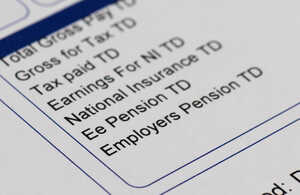One in five workers will be paying higher-rate tax by 2027

A six-year freeze on income tax allowances and thresholds means that millions of people will move into a higher tax bracket over the next few years.
The freeze, which started in April last year, is set to become the single biggest tax-raising measure since the 1970s, according to a new report from the Institute for Fiscal Studies (IFS).
It’s the latest in a long line of measures by successive governments that have significantly increased the scope of higher rates of income tax.
By 2027-28, almost 8 million people — one in five of all taxpayers — will be paying income tax at 40% or above. That includes one in four teachers and one in eight nurses and represents a “seismic shift” in the tax system, the IFS said.
30-year widening of higher-rate net
Compared with the early 1990s, the proportion of adults paying higher rates will almost quadruple.
In 1991-92, 3.5% of UK adults (1.6 million) paid the 40% higher rate of income tax. In the last tax year, 2022-23, 11% (6.1 million) were paying higher rates, and that figure is set to reach 14% (7.8 million) by 2027-28.
Among that 14%, 3.1% of adults will face marginal tax rates of either 45% or 60% — only slightly below the share who paid the 40% higher rate at the start of the 1990s.
For the 40% rate to impact the same proportion of people as it did in 1991, the higher-rate threshold would need to be nearly £100,000 in 2027-28 — almost double its actual level of £50,270.
‘Hostage’ to inflation
The acceleration in the number of higher-rate taxpayers over the next five years will add to the financial pressures on the many workers whose earnings are not keeping up with inflation, the think tank said.
As a result of the freeze, real household disposable income will be 1.4% lower by 2027-28 than would have been the case if the personal allowance and higher-rate threshold had been increased in line with inflation.
One third of the expected record fall in household incomes this year is likely to be a result of this tax rise.
“For income tax, the story of the last 30 years has been one of higher-rate tax going from being something reserved for only the very richest, to something that a much larger proportion of adults can expect to encounter,” said Isaac Delestre, research economist at the IFS.
“Alongside the fact that 1.7 million people will be paying marginal rates of 60% and 45% in the next few years, this represents a fundamental and profound change to the nature and structure of our income tax system. The freeze to thresholds is supercharging that process, pulling an additional 2.5 million more people into paying rates of 40% or more by 2027-28.
“Whether or not the scope of these higher rates should be expanded is a political choice as much as an economic one, but achieving it with a freeze leaves the income tax system hostage to the vagaries of inflation — the higher inflation turns out to be, the bigger impact the freeze will have.”
Posted by Fidelius on May 22nd 2023

